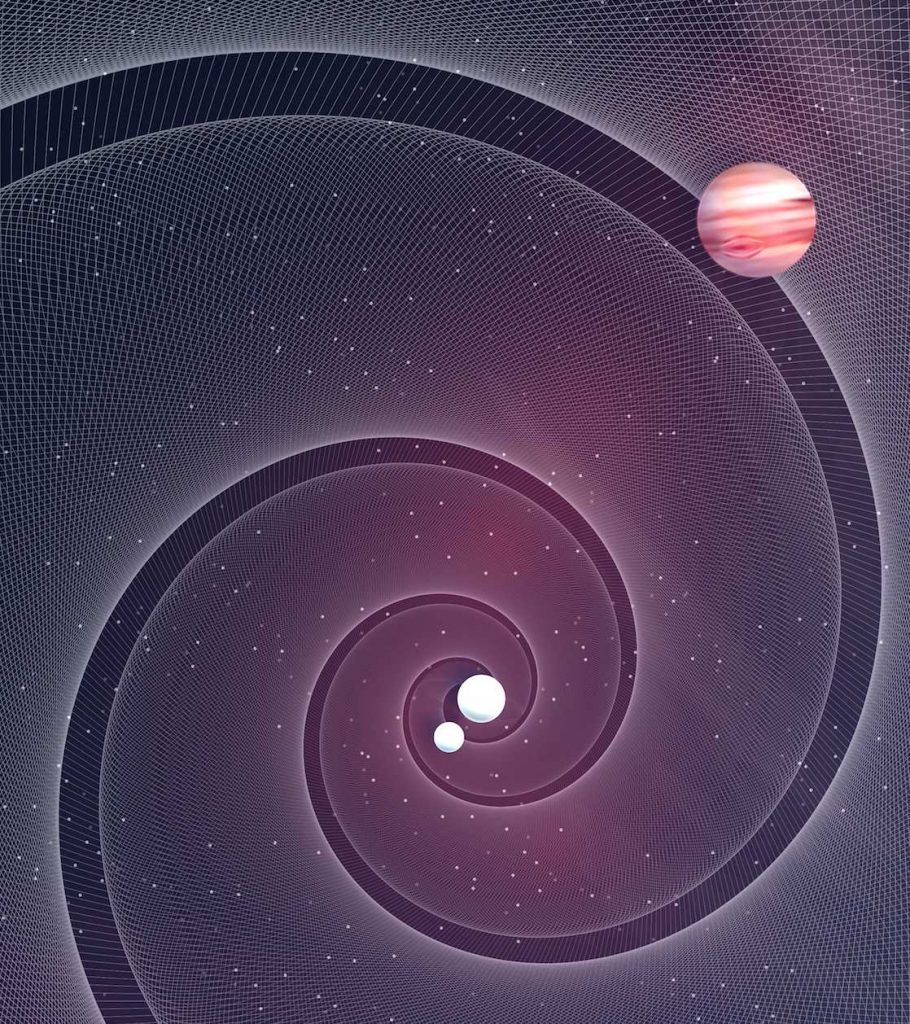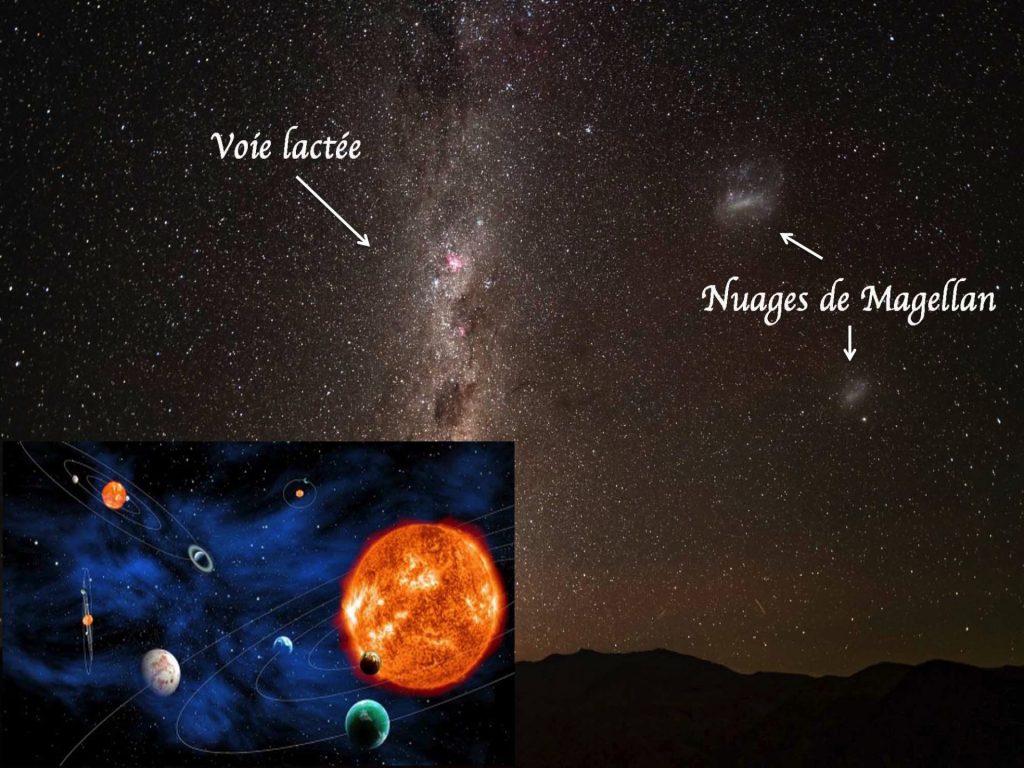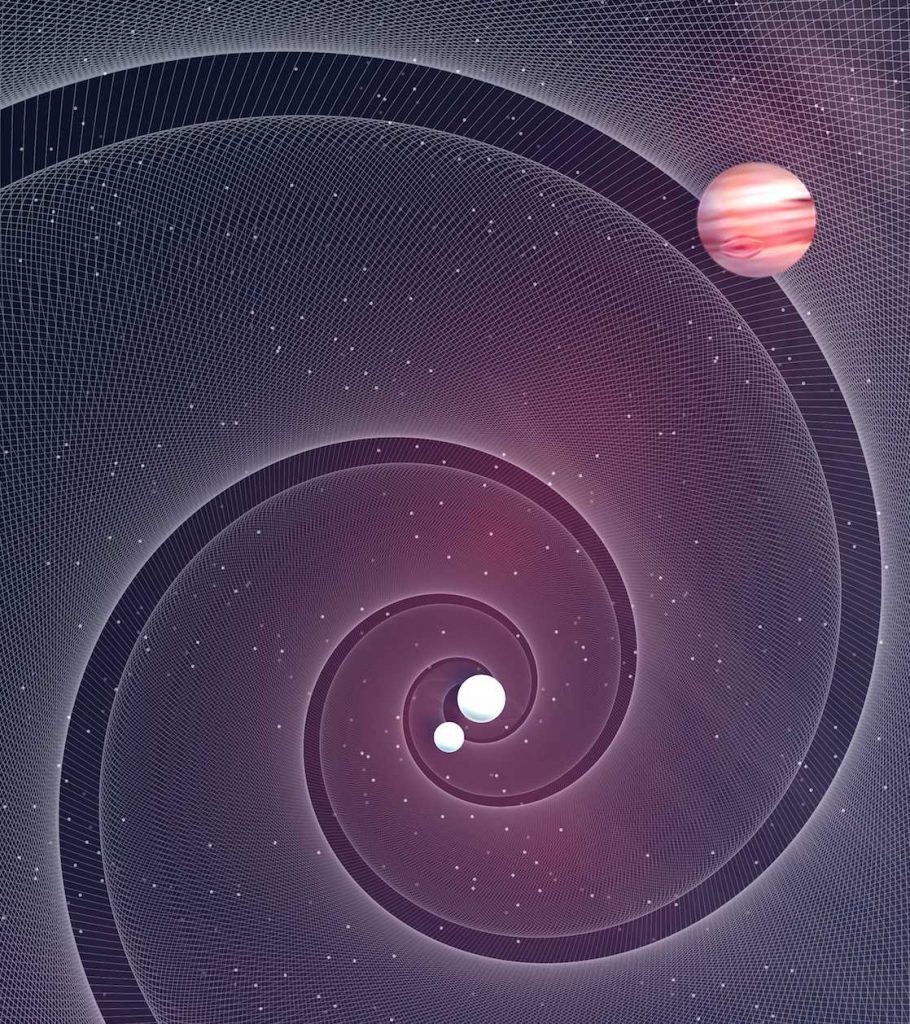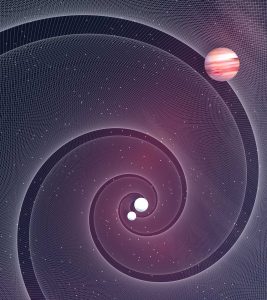The LISA experiment will be able to detect planets throughout the Galaxy
The recent detections of gravitational waves, tiny vibrations of space-time, have opened a new window in the observation of the Universe. Two researchers, including Camilla Danielski from the Astrophysics Department of CEA-Irfu, have just demonstrated that, when these waves are emitted by two dense stars in orbit, they can be disturbed if a planet is in orbit around this pair of stars. Gravitational waves, which can be detected up to great distances, are then an infallible means of detecting a population of planets inaccessible otherwise. The Laser Interferometer Space Antenna (LISA) experiment, scheduled for launch in 2034, will be able to reveal giant planets throughout the Galaxy and even in the companion galaxies of the Magellanic Clouds. These results are published in the Nature Astronomy of July 8, 2019.

Detect distant planets
For 20 years, the search for exoplanets, planets orbiting other stars than the Sun, has known a revolution and more than 4000 planets have already been discovered in orbit around a wide variety of stars, different from our own Sun. Different classes of exoplanets have thus been discovered, of different weights, sizes and compositions. These discoveries deeply modified our conception of the planets and revealed a great diversity of planetary population. But detection techniques, based on light analysis, remain limited to a region close to the Sun.
The first discovery, by the LIGO and Virgo experiments in September 2015, of gravitational waves produced by the fusion of two black holes marked the beginning of a new astronomy by opening the promising new era of multi-messenger observations. Gravitational waves are not light waves but deformation waves of space-time; they materialize by a transitory variation of distance between two points, measurable thanks to lasers. Unlike light waves that can be absorbed into interstellar space, they propagate freely throughout space and are therefore potentially detectable up to very large distances.

Planets around a couple of white dwarfs
Since 2015, eleven gravitational wave events have already been recorded. These waves can be produced by the fusion of dense objects, black holes or neutron stars, but also by the rapid rotation of a pair of white dwarfs in tight orbit. The white dwarfs are the last stage of the evolution of stars like the Sun and are dense objects of a mass equivalent to that of the Sun, condensed in a radius equivalent to that of the Earth. They are particularly numerous in the Galaxy, since it is estimated that about 10% of the stars have already become white dwarfs, but they are difficult to detect because they emit little light.
The researchers calculated that, if a planet is orbiting a tight pair of white dwarfs, then the gravitational wave produced will be modified due to the gravitational pull of the planet on the star couple, thus revealing the existence of the planet. This technique is similar to the well-known radial velocity method used to locate exoplanets with conventional telescopes. But unlike methods that analyze light, the use of gravitational waves makes it possible to explore much larger regions without being disturbed by the activity of the central star.

The authors show that the next major mission LISA (Spatial Interferometer with laser antenna) of the European Space Agency (ESA), whose launch is planned for 2034, will be able to detect exoplanets of the mass of Jupiter and above, everywhere in our Galaxy, by overcoming the distance limits of conventional telescopes. LISA is a space experiment consisting of 3 satellites in triangle, separated by 2.5 million kilometers and connected by 6 laser beams. Its launch is scheduled for 2034. It will be able to detect gravitational waves without being affected by the sources of terrestrial disturbances. LISA will even have the potential to detect exoplanets also in neighboring galaxies, which could therefore reveal the first extragalactic exoplanet. What kind of extragalactic planets are these? Will they be similar to those already discovered close to the Sun or will they be totally different? Great surprises still await astrophysicists in their understanding and their search for other earths.
Contact : Camilla DANIELSKI
Publication :
“The gravitational-wave detection of exoplanets orbiting white dwarf binaries using LISA”
Nicola Tamanini and Camilla Danielski
published in Nature Astronomy (8 July 2019)
See also : No gamma echo to the merger of two black holes (29 mars 2016)
Content : C. Danielski, J.M.Bonnet-Bidaud


